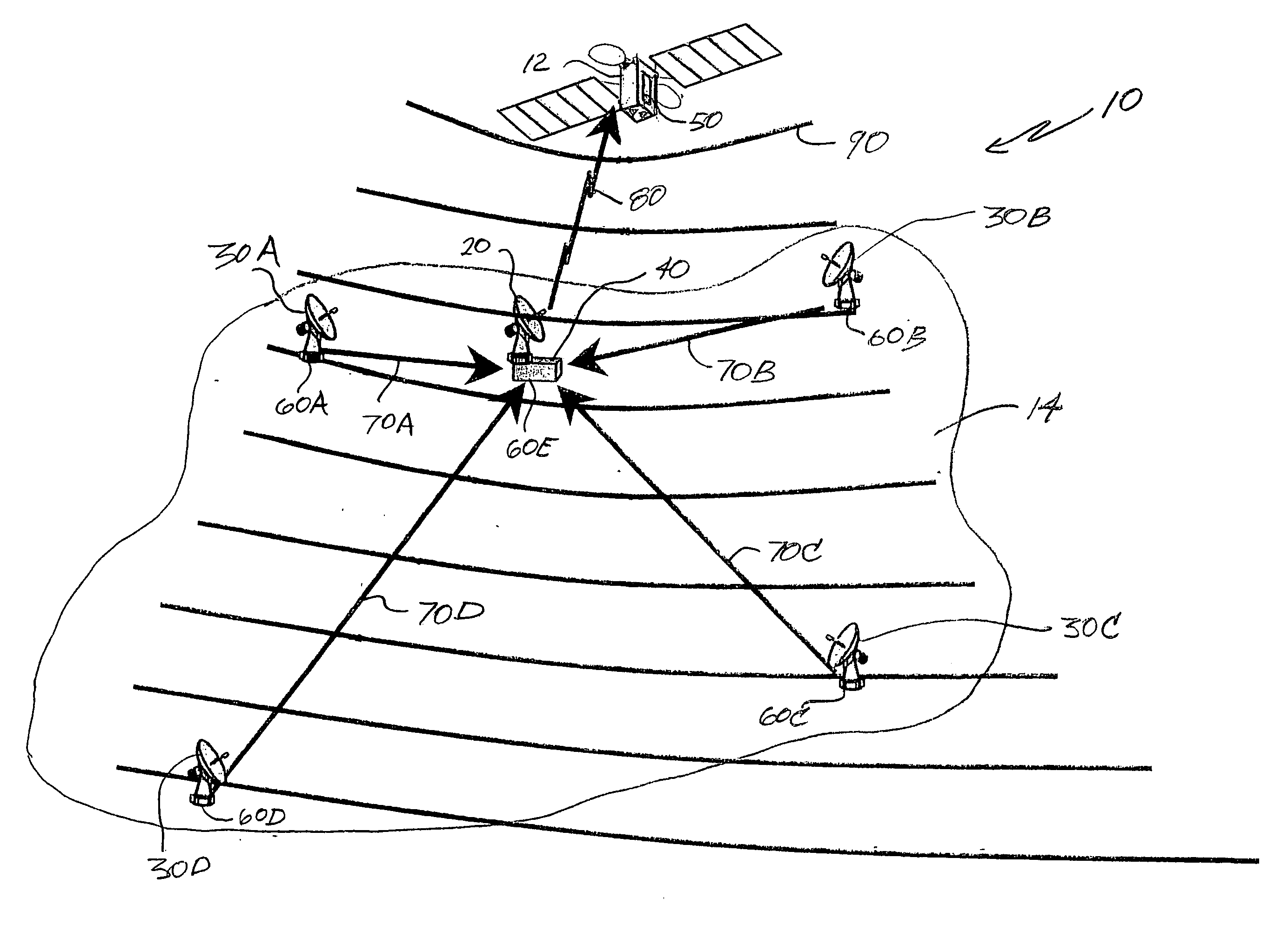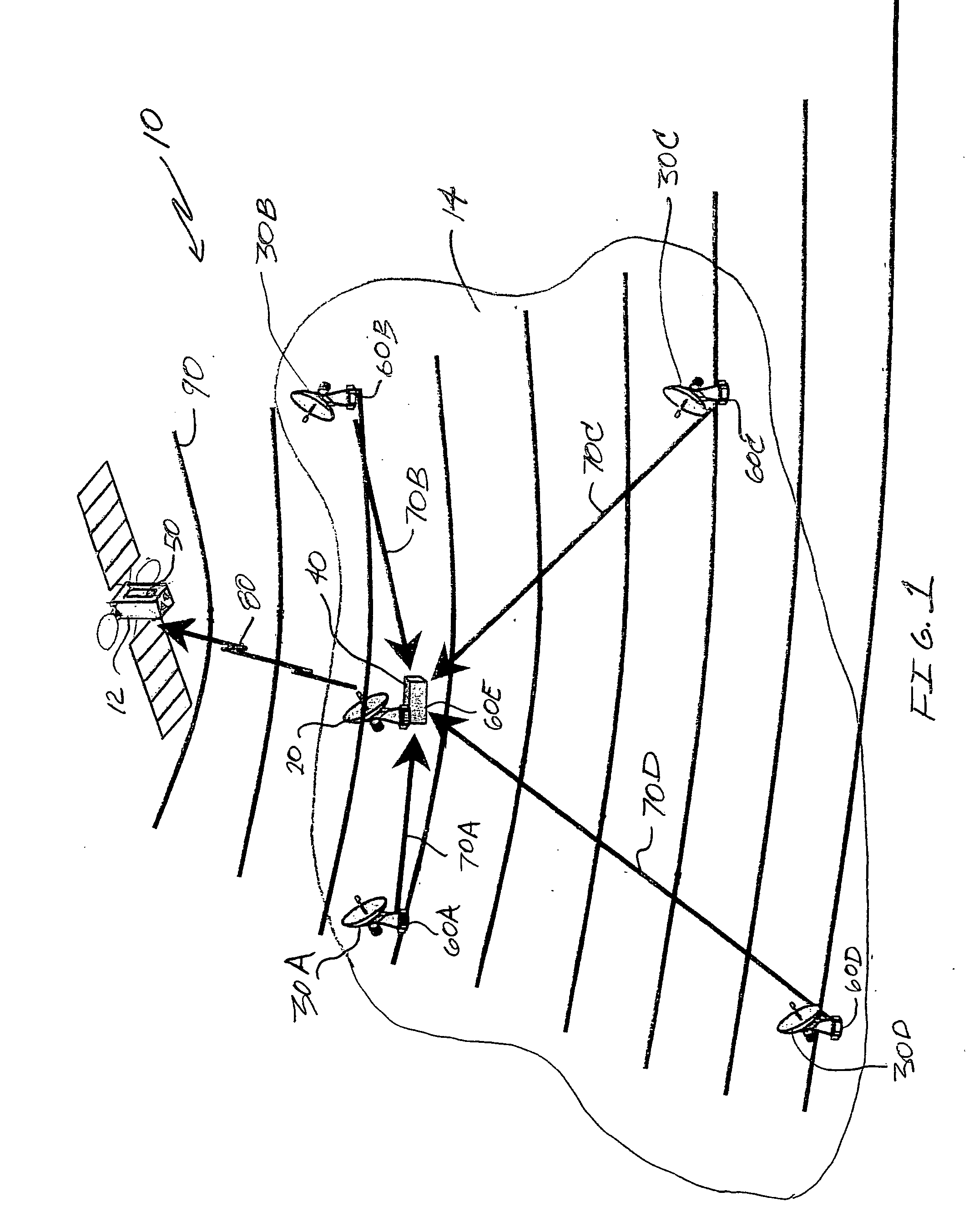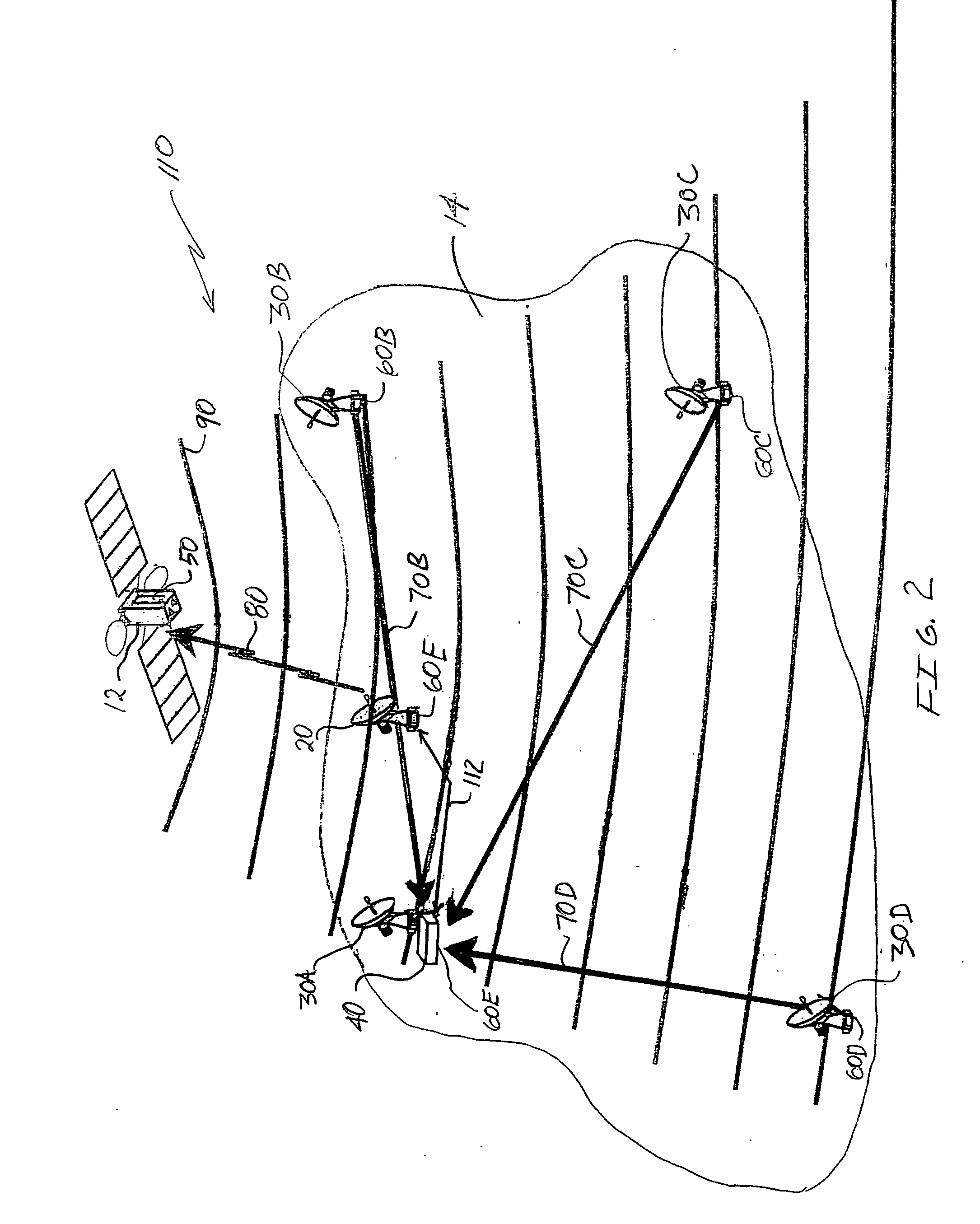Passive geostationary satellite position determination
- Summary
- Abstract
- Description
- Claims
- Application Information
AI Technical Summary
Benefits of technology
Problems solved by technology
Method used
Image
Examples
Embodiment Construction
[0019]FIG. 1 shows one embodiment of a satellite position determination system 10 that operates to determine a three-dimensional position of a satellite 12. In the illustrated embodiment, the satellite 12 is in earth orbit, although it is possible that the satellite 12 may not be orbiting the earth. Further, the satellite 12 is in a geosynchronous orbit, although it is possible that the satellite may be in a non-geosynchronous orbit. Regardless of its orbit, the satellite position determination system 10 is configured to accurately determine the three-dimensional position of the satellite 12 relative to a fixed reference point (e.g., a location on the surface of the earth). In this regard, the system 10 may determine the position of the satellite 12 in accordance with a number of coordinate systems including, for example, a Cartesian coordinate system.
[0020] The system 10 includes a ground uplink station 20, four receiver stations 30A-30D, a master station 40, and a transceiver uni...
PUM
 Login to View More
Login to View More Abstract
Description
Claims
Application Information
 Login to View More
Login to View More - R&D
- Intellectual Property
- Life Sciences
- Materials
- Tech Scout
- Unparalleled Data Quality
- Higher Quality Content
- 60% Fewer Hallucinations
Browse by: Latest US Patents, China's latest patents, Technical Efficacy Thesaurus, Application Domain, Technology Topic, Popular Technical Reports.
© 2025 PatSnap. All rights reserved.Legal|Privacy policy|Modern Slavery Act Transparency Statement|Sitemap|About US| Contact US: help@patsnap.com



